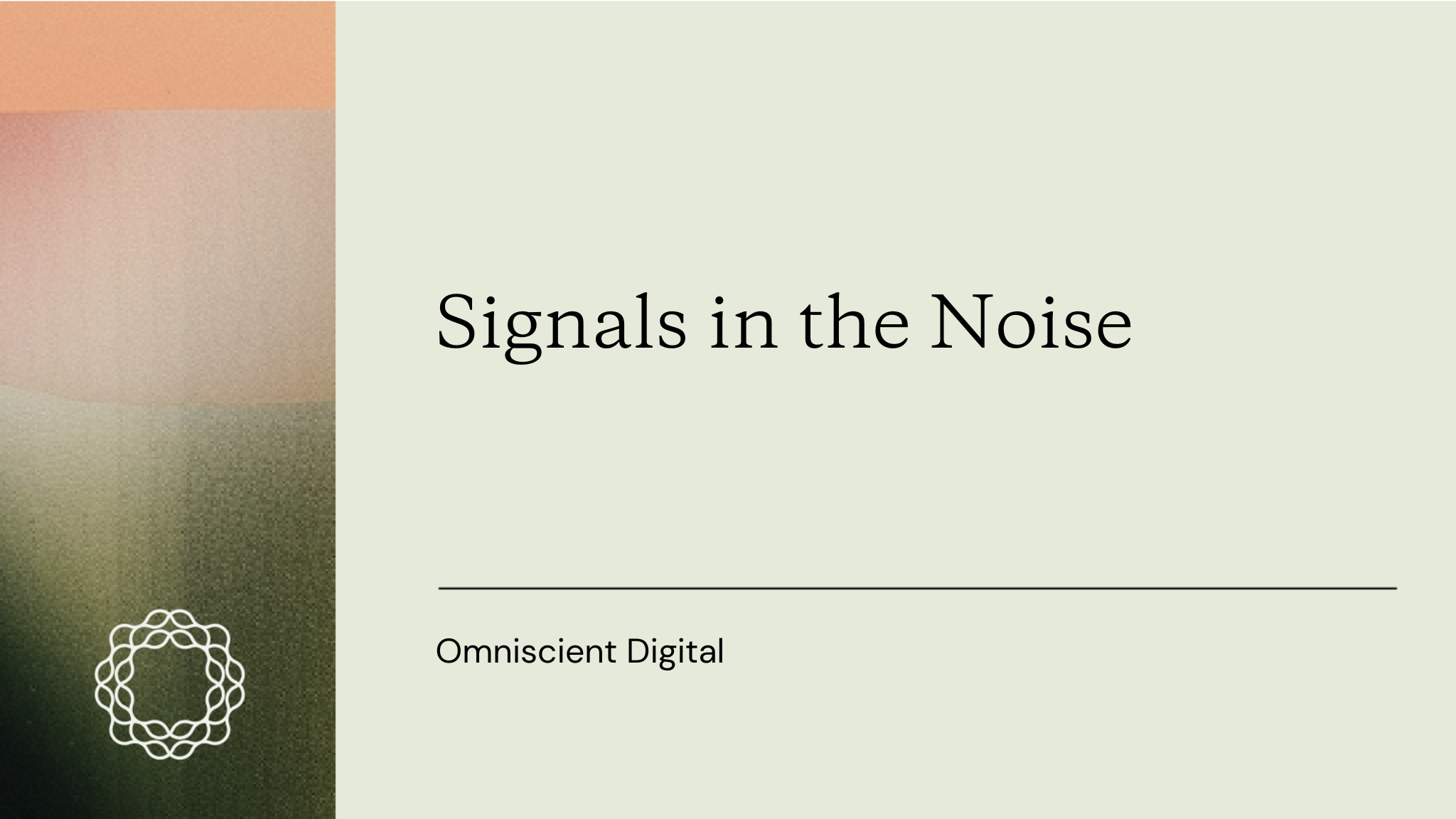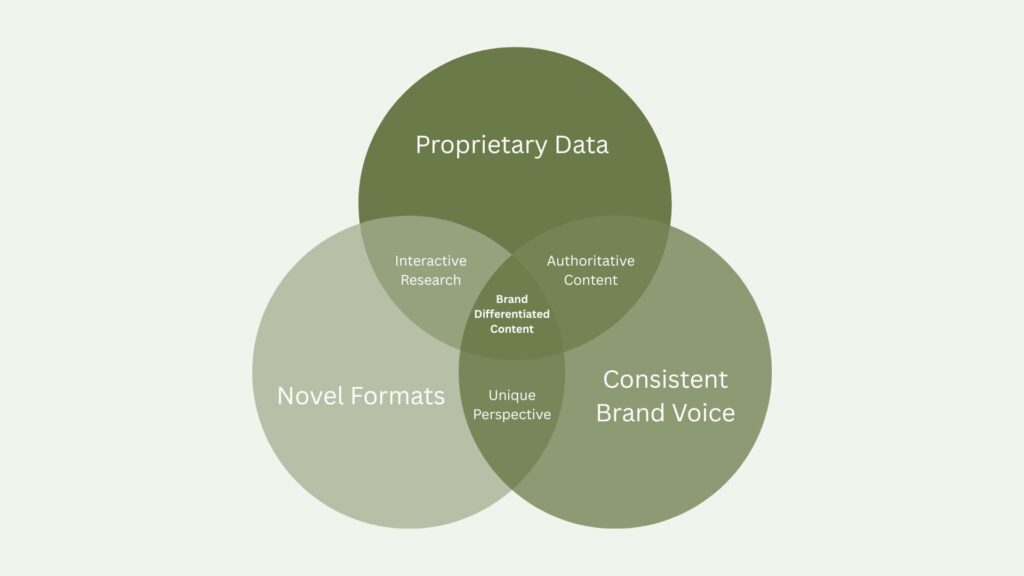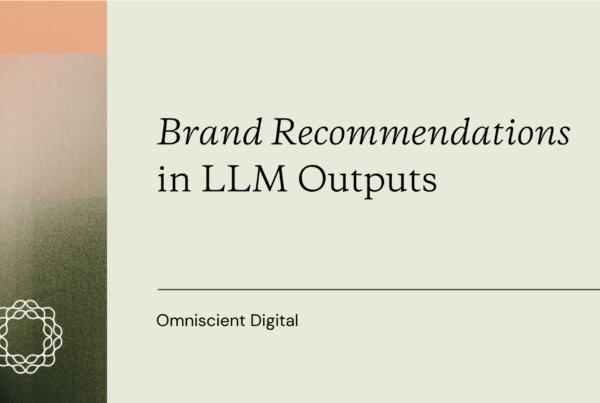
There’s a lot of noise out there.
From LinkedIn thought leadership to constant AI announcements to the seemingly dozens of marketing podcasts that pop up every week, there’s no shortage of information.
There is, however, a shortage of signal.
We decided at the beginning of this year to seek out signals, namely by interviewing a few dozen marketing leaders across B2B software companies. Some current clients, some VCs looking after a large portfolio of startups, some enterprise giants, some early stage startups.
There were three major themes throughout our 20 interviews:
- The impact of AI on marketing
- Challenges with data and attribution
- Standing out in crowded markets and channels
What follows is a summary of the research, but you can download the full report here.
1. AI’s Impact on Marketing
AI Is Ubiquitous, But ROI Remains Unclear
All 20+ leaders we spoke with are experimenting with AI in some form. Some are building Generative Engine Optimization (GEO) strategies, others are deploying AI in content creation or internal automation.
Yet, 55% expressed skepticism about real ROI. They see efficiency gains but lack clear, repeatable frameworks to justify the hype.
“AI doesn’t feel like it’s quite there yet… I haven’t seen many companies where they’re doing something with AI and absolutely crushing it.” – VP of GTM, SaaS Series C
Current Implementations: Content, Strategy, Ops, Product
- Content creation: 85% use AI for drafting blog posts, outlines, keyword research, or visuals.
- Strategic insights: More than half use AI to draft briefs, analyze trends, or develop ICPs.
- Operational automation: ~45% use AI to streamline workflows, lead enrichment, or campaign execution.
- Product enhancement: ~25% integrate AI directly into user experiences (e.g. calculators, chatbots).
AI Overviews: A New Organic Battleground
80% of marketers cited declining click-through rates due to AI Overviews on Google and Bing. These AI-generated summaries appear above traditional links, satisfying user queries instantly.
This is disrupting the SEO playbook. Ranking #1 is no longer a guarantee of traffic. Brands now ask, “How do we become the source AI pulls from?”
SEO, GEO, and the Race for AI Visibility
Generative Engine Optimization is the new frontier of organic growth. While brands still hope to rank well in Google search, they now also want to be mentioned by ChatGPT or Perplexity. But the rules are not as straightforward. Leaders are asking:
- How do LLMs choose sources?
- What signals matter?
- How do we track visibility?
Brand mentions, unique content, Reddit and Quora citations, and high authority sites appear to matter more than traditional backlinks.
“We’re seeing ChatGPT become our top self-reported acquisition source. That’s twice the volume of Google right now.” – VP of Marketing, SaaS Series A
2. Challenges With Data and Attribution
The Attribution Struggle Continues
Even in (…especially in?) the AI era, data fragmentation and attribution remain core pain points. Marketing teams are trying to answer basic questions: What’s driving revenue? Which channels are effective? Where should we invest more?
Yet, the tooling often lags:
- CRMs like Salesforce and HubSpot remain the “source of truth” but are plagued by messy data.
- Advanced or specialized tools (Looker, Heap, HockeyStack, Peec) exist, but adoption is uneven.
- Many leaders still rely on spreadsheets.
First-Touch, Last-Touch, or Multi-Touch?
Many teams are moving beyond basic first- or last-touch attribution, and want to rely on Multi-Touch Attribution (MTA) for a better view of the customer data. Still, only a few have the data cleanliness and alignment to make MTA work.
“We rely on a gut sense from trends and manual tracking. We know it’s not ideal.” – VP of Marketing, SaaS Series C
Metrics Are Maturing
There’s a clear shift from vanity to value:
- Traffic and keyword rankings are no longer the north star.
- Revenue, pipeline, conversion rates, and share of voice are in.
- Some leaders mentioned ditching MQLs in favor of more holistic and high intent indicators like SALs, SQLs, and MELs (Marketing Educated Leads).
“I’d love to stop focusing on rankings. Instead, I want to track market position and actual conversion.” – Director of SEO, Public SaaS
Visibility Gaps in the AI Era
AI tools create dark funnel issues. Prospects may find your brand via ChatGPT, but visit your site directly or bypass it altogether. Traditional attribution breaks down here.
Leaders are layering:
- Self-reported attribution during onboarding
- Tools like Peec/Profound for LLM visibility
- Log file analysis for crawler signals
“You can’t forecast accurately without some kind of bottoms-up model tied to real data.” – Operating Partner, Early Stage SaaS
3. Standing Out in a Crowded Market
Content Abundance, Attention Scarcity
AI has made it easy to publish. But it’s also created a sea of sameness, and content quality is falling. Nine leaders expressed concerns about the commoditization of content.
“AI should be the starting point. Real insight, original data, and expert POVs are what break through.” – Operating Partner, Early Stage SaaS
Differentiation Through Novel Value
Winning teams focus on:
- Proprietary data (surveys, benchmarks, case studies)
- Original formats (videos, calculators, tools, visuals)
- Alternative platforms (YouTube, podcasts, Reddit, LinkedIn)
This kind of content earns mentions in AI engines, builds brand equity, and earns trust.
“We’re investing in YouTube and podcasts because that’s where behavior is shifting.” – Director of Content Marketing and SEO, SaaS Series C

Brand: The Last Great Moat?
When AI levels the tactical playing field, brand is high leverage differentiator. Trust drives clicks, citations, and loyalty.
LLMs tend to cite familiar, trustworthy sources. So when someone sees your brand in an AI overview, their likelihood to click depends on prior brand association. Users tend to click, hover, and engage with known faces, brands, and platforms. All channels benefit from brand-assisted awareness and affinity.
This is the Matthew Effect in play: trusted brands get more visibility, which earns more trust, and so on.
“Everything is brand: your visuals, your copy, your blog voice, your sales decks. It all adds up.” – Director of GTM, SaaS Series C
Final Takeaways: Orchestrating AI, Data, and Brand
To win in 2025, marketing teams must synchronize three levers:
1. AI as Amplifier, Not Compass
Use AI to automate and enhance workflows. But don’t let it dictate your strategy. Human insight and original ideas remain irreplaceable.
2. Data as Decision Engine
Unify tools, clean your CRM, and align on meaningful metrics. Attribution will never be perfect, but it must be useful.
3. Brand as Your Moat
Build a brand users remember and LLMs recognize. Create hard-to-fake content assets rooted in experience, data, and voice.
Closing Thoughts
In a world of infinite content and algorithmic gatekeepers, standing out requires more than volume. It requires clarity, precision, and trust. But most of all, a brand that consistently delivers value.
That’s the signal. The rest is just noise.
Want the full picture?
This post scratches the surface of what we uncovered in our conversations with 20+ marketing leaders. The full Signals in the Noise report dives deeper into the AI strategies, attribution frameworks, and brand plays shaping growth in 2025—complete with more quotes, data, and actionable takeaways you can apply right now.


